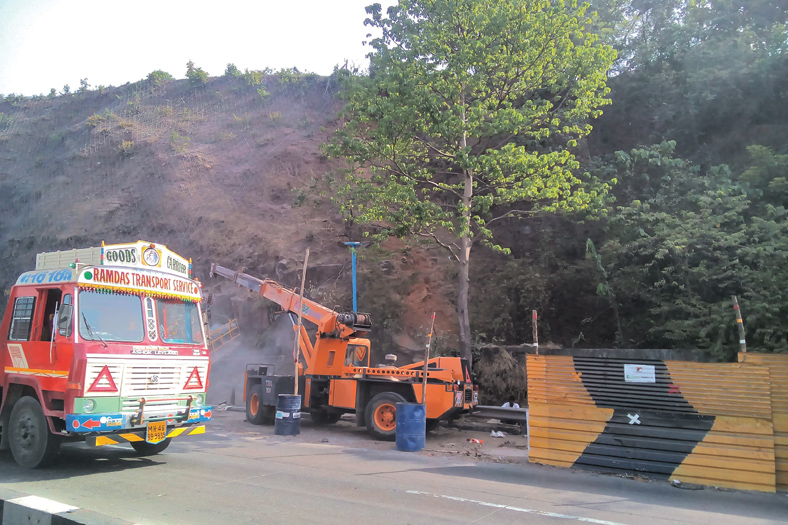Faltering road sector gets due attention, though challenges remain
Faltering road sector gets due attention, though challenges remainAs NHAI and state governments has planned to award sizeable road projects, developers and contractors are hoping for good; however, with many developers facing stretched liquidity, the industry is likely to witness consolidation and exits in the near futureAfter awarding 6,491 km of roads in FY12, the road sector witnessed a slump in award of projects with only 1,156 km of road projects being bid out by NHAI in FY13 which is about 17 per cent of the target of 7,000 km set for the financial year. The lower project awards have been on account of weak interest from private sector participants due to difficulty in raising funds, stressed financial position of many developers, delays in getting right of way and clearances, relatively less lucrative stretches in the offering as well as economic slowdown which has also impacted road traffic in the operational projects. Furthermore, sales of automobiles (both passenger and commercial vehicles) have also witnessed de-growth in-line with the slowing economic activities over the last few quarters which is likely to impact the future traffic (and hence toll revenues) until the economic activity revives.Notwithstanding, the sharp decline in project awards and the performance on the project execution improved in FY13. Backed by strong pipeline of projects under execution, the completion rate for NHAI projects increased to 7.9 km/day in FY13 from average of 6.2 km/day in FY12. However, progress on the projects awarded in FY12 remained muted mostly in the absence of requisite right of way, clearances and inability to achieve financial closure. To reduce the uncertainty over land acquisition, NHAI has decided to award road projects only after substantial progress is made on the land acquisition and clearance fronts. Simultaneously NHAI has stepped up its efforts on land acquisition. However, the acquisition process is often elongated due to capacity constraints faced by NHAI and opposition from land owners primarily over the compensation amount. Furthermore, multiple clearances from different authorities required for project often adds to the time overruns and uncertainty. However, the de-linking of environment and forest clearance, and proposal to ease raw-material (aggregate) supply have been positive developments, which are expected to aid project execution. Nevertheless, coordinated efforts from multiple authorities are required to further streamline and shorten the clearance process. In this regard, finance minister’s proposal of setting up of a regulatory body for the road sector could go a long way in dealing with the challenges faced by the sector.The interest of private players towards the public-private partnership (PPP) projects in the sector has waned as evident from the weak bidding response in the offered projects, stated intent of some prominent developers to reduce their build operate transfer (BOT) project exposure, lower number of pre-qualified bidders for CY13, and intent to exit or renegotiate some of the projects awarded earlier. While decline in interest may be attributed partly to the subdued macro-economic environment, the weakening of the financial profile of many developers has also led to the lukewarm response to the recent biddings. Given that the sentiment toward the BOT projects in the sector could continue to remain weak in the short to medium term, NHAI’s initiatives in awarding projects on engineering, procurement and construction (EPC) and operate, maintain and transfer (OMT) basis is a welcome step as this would unbundle the execution, funding and traffic risks and could stimulate participation from the private sector.According to Rohit Inamdar, Senior Vice President, ICRA, “Around 18 projects which were awarded in FY12 could not achieve financial closure till March 2013 due to uncertainty on land acquisition and approvals as well as reluctance on the part of banks to fund what are perceived to be aggressively bid projects. In case of many toll-based road projects, which commenced operations during FY12-FY13, the actual tolled traffic during initial period was significantly lower than the projected traffic. Similarly, some of the established stretches witnessed decline in traffic because of overall weak economic environment. This coupled with higher interest burden resulted in stress on debt servicing capability and project return indicators. The same resulted in turning lenders cautious while lending to the road sector. Many lenders have introduced stringent conditions like 100 per cent right of way, clearance, and significant upfront contribution from promoters before the sanction or disbursement of the loan. Bank lending to the sector was also constrained due to large requirement of the sector which could hit the internal sectoral exposure limit of some banks, and the unsecured tag associated with the road projects. On the later front, in March 2013, RBI has allowed loans to PPP road projects to be treated as secured subject to certain conditions, which is expected to improve lending to the sector to some extent.”Mr Inamdar added, “While interest for new BOT projects is weak, completed projects with established traffic are witnessing demand from private equity and other global as well as domestic funds. Some contractors and developers are exploring the options of divesting their stakes in the completed projects to release their blocked capital and then redeploy it toward newer projects.”With strong pipeline of road projects to be awarded by NHAI and state governments over the next 3-4 years, the opportunities for both developers and contractors would be sizeable, and players with strong balance sheet and ability to raise funds would be better placed to benefit from this. However, with many road developers facing stretched liquidity, the industry is likely to witness both consolidation and exits in the near future. As large investments are planned in this sector, the participation of private sector will be indispensable, and the government is likely to facilitate policies to attract higher interest. Some of the initiatives like creation of infrastructure debt funds (IDFs) and the active role played by India Infrastructure Finance Company Ltd. (IIFCL) will assume greater importance in channelising the much needed long-term debt funds into this sector. The government could also ease norms for stake sale in completed BOT projects and also work toward solving some of the other issues like a quick resolution of the disputed claims which would improve liquidity available to the sector. The proposal to set up an independent regulator would also be a positive for the sector.
Cookie Consent
We use cookies to personalize your experience. By continuing to visit this website you agree to our Terms & Conditions, Privacy Policy and Cookie Policy.









